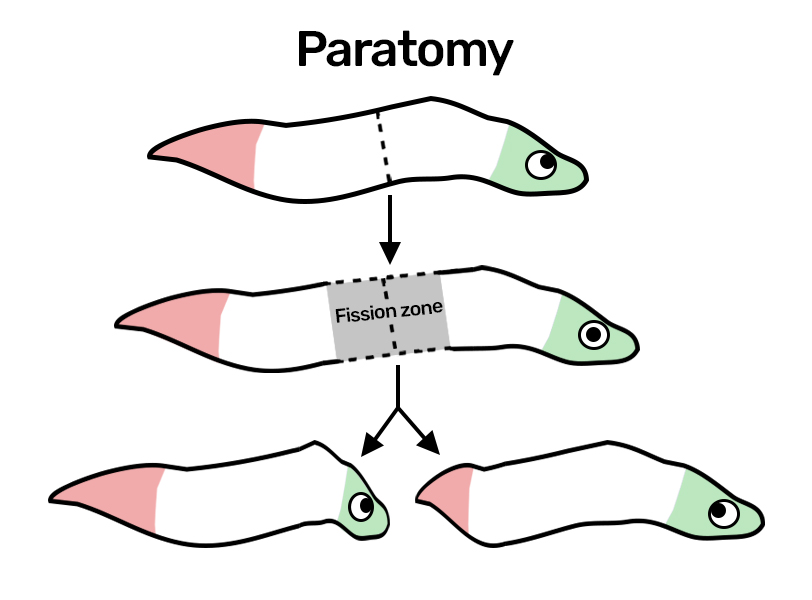Reproduction in the animal world can be complicated at the best of times. But far from the flashy birds or mammals competing for mates, a new study has revealed that, in the case of some flatworms, they turn to asexual reproduction with some surprising results.
The rest of this article is behind a paywall. Please sign in or subscribe to access the full content.
Stenostomum brevipharyngium is a microscopic flatworm species that reproduces asexually by a method known as paratomy. This means that the offspring form from the middle of the body of the parent, effectively splitting the parent into two worms. When the process occurs, each worm should be left with a head and a tail. However, scientists have noticed that once in a while, things can go a little awry, and the worms end up with two heads.
This is how paratomy is supposed to work…
Image Credit: © IFLScience
During normal paratomy, the worms first grow in size, then produce new structures in the middle of their bodies, called the fission zone. Stem cells begin to differentiate into new body parts, including head tissues. This whole process takes roughly four days; in the late stage, the worms are arranged head-tail-head-tail before the splitting process occurs.
However, in routine laboratory cultures of S. brevipharyngium, the study authors “started to observe a bizarre developmental malformation that we nicknamed double-head worms.”
“These animals look similar to the individuals in the advanced stage of paratomy, but in addition to the anterior-facing head of the second zooid, they also have another, posterior-facing head, present at the posterior pole of the first zooid, just in front of the fission zone,” the authors write in their paper.
When the team looked more closely at these double-headed flatworms, they found that their brain structures had reversed polarity when compared to the other heads in the chain, but were not malformed, leading the researchers to believe they might be fully functional.
The researchers also wanted to know if the extra heads had developed instead of tails, or if the entire body had been somehow duplicated. They looked at the worms with respect to different cell types found in the head and tail of typical worms. What they found indicated that there were none of the cell types normally found in tails, which is understandable given that these worms are double-headed. The team concluded that the double-headed worms came from “erroneous, yet spontaneous, formation of head tissues, instead of tail, during asexual process of paratomy.”
What is even more remarkable is that some of the two-headed worms were able to undergo asexual reproduction and produce normal type worms with heads and tails. Additionally, some of the double-headed worms were also able to grow a tail at their former head ends, even with their entire body plan the wrong way round.
“Effectively, such regeneration allows stable reversal of the body axis polarity without impairment of the survival or reproductive abilities of the animal, an exceptionally rare phenomenon among bilaterians,” the authors conclude.
The paper is published in Proceedings of the Royal Society B.
Source Link: Freaky "Frankenstein" Worms Can Get Reproduction Wrong And End Up With Two Heads
